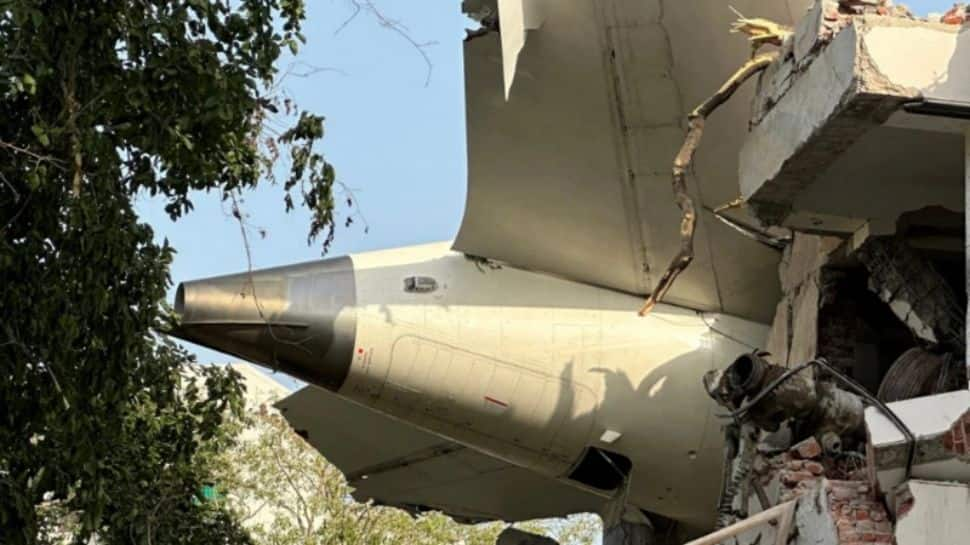Top Stories
Air India Crash Investigation Highlights Boeing Fuel Switch Concerns

A preliminary investigation into the tragic crash of an Air India flight in June 2023 has raised serious concerns regarding the fuel control switches installed on Boeing aircraft. The incident, which occurred shortly after takeoff from Ahmedabad, resulted in the loss of 260 lives, leaving only one survivor. Investigators have suggested that a malfunction in the fuel cutoff switches may have contributed to the disaster.
The Boeing 787-8 Dreamliner was en route to London Gatwick when both fuel cutoff switches unexpectedly moved from the ‘Run’ to ‘Cutoff’ position shortly after takeoff. According to the report released by the Aircraft Accident Investigation Bureau (AAIB) in New Delhi, this uncommanded switch movement interrupted engine thrust, leading to a complete loss of fuel supply to both engines. A cockpit voice recording captured a poignant exchange between the pilots, with one asking, “Why did you cut the fuel?” to which the response was, “I did not.”
FAA Response to Investigation Findings
The U.S. Federal Aviation Administration (FAA) responded to the AAIB’s findings, affirming that the fuel control switches on Boeing aircraft, including the 787 model, are safe for use. The FAA acknowledged a 2018 advisory that advised Boeing operators to inspect locking mechanisms of fuel cutoff switches to prevent unintended movement. However, it clarified that no formal action was mandated following that advisory.
The AAIB confirmed that Air India had not acted on the advisory, raising further questions about the airline’s compliance with safety recommendations. The FAA noted that while some switches had been installed without locking features, it did not classify this situation as a safety hazard requiring immediate directives. The agency stated that it would continue to share relevant findings with international civil aviation authorities.
Details Surrounding the Crash
The crash occurred less than a minute after takeoff, with the aircraft reaching an airspeed of 180 knots before both fuel cutoff switches flipped within one second of each other. Approximately ten seconds later, the switches were returned to the ‘Run’ position; however, this came too late to avert engine failure. One pilot managed to issue a Mayday distress call, but there was no response from air traffic controllers before the plane crashed.
CCTV footage from the airport captured the aircraft lifting off before quickly losing altitude and crashing into a building near the runway. Investigators noted that the Ram Air Turbine (RAT) activated immediately after takeoff, signaling a total loss of engine power. Their report also indicated that there were no signs of bird activity or any obstructions on the flight path at the time of the accident.
Air India has expressed its condolences to the families affected by this tragedy and confirmed its commitment to cooperating fully with all relevant authorities. The airline received the preliminary report from the AAIB on July 12 but did not comment on the technical findings. A comprehensive report detailing the investigation’s findings is anticipated within the next twelve months.
As the investigation continues, the international aviation community will be closely monitoring the implications of these findings on safety standards and regulatory practices concerning aircraft fuel systems.
-

 World4 months ago
World4 months agoSBI Announces QIP Floor Price at ₹811.05 Per Share
-

 Lifestyle4 months ago
Lifestyle4 months agoCept Unveils ₹3.1 Crore Urban Mobility Plan for Sustainable Growth
-

 Science4 months ago
Science4 months agoNew Blood Group Discovered in South Indian Woman at Rotary Centre
-

 World4 months ago
World4 months agoTorrential Rains Cause Flash Flooding in New York and New Jersey
-

 Top Stories4 months ago
Top Stories4 months agoKonkani Cultural Organisation to Host Pearl Jubilee in Abu Dhabi
-

 Sports4 months ago
Sports4 months agoBroad Advocates for Bowling Change Ahead of Final Test Against India
-

 Science4 months ago
Science4 months agoNothing Headphone 1 Review: A Bold Contender in Audio Design
-

 Sports4 months ago
Sports4 months agoCristian Totti Retires at 19: Pressure of Fame Takes Toll
-

 Business4 months ago
Business4 months agoIndian Stock Market Rebounds: Sensex and Nifty Rise After Four-Day Decline
-

 Politics4 months ago
Politics4 months agoAbandoned Doberman Finds New Home After Journey to Prague
-

 Top Stories4 months ago
Top Stories4 months agoPatna Bank Manager Abhishek Varun Found Dead in Well
-

 Sports4 months ago
Sports4 months agoDownload Minecraft Bedrock 1.21.110.20 Beta Across Platforms Now










